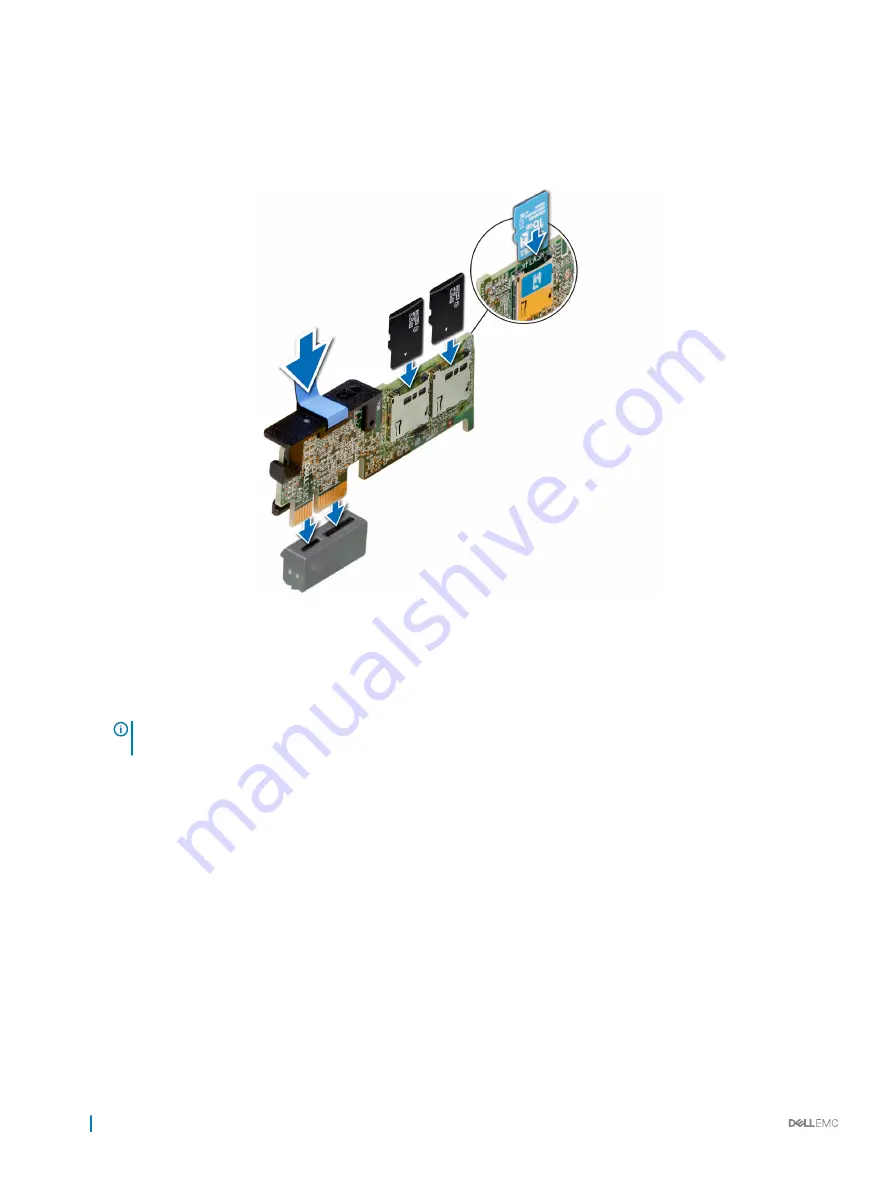
Steps
1
Locate the IDSDM/vFlash connector on the system board.
To locate IDSDM/vFlash, see the System board jumpers and connectors section.
2
Align IDSDM/vFlash card with the connector on the system board.
3
Push IDSDM/vFlash card until it is firmly seated on the system board.
Figure 85. Installing optional IDSDM/vFlash card
Next steps
1
Install the MicroSD cards.
NOTE:
Reinstall the MicroSD cards into the same slots based on the labels you had marked on the cards during
removal.
2
Follow the procedure listed in
After working inside your system
.
LOM riser card
The LOM riser card is a small, removable mezzanine card, which provides the flexibility of selecting different network connectivity options.
Removing the LOM riser card
Prerequisites
1
Follow the safety guidelines listed in
2
Follow the procedure listed in
Before working inside your system
.
3
If installed, remove the low profile, full height X1, or butterfly risers.
4
If installed, remove the rear drive cage.
130
Installing and removing system components






























